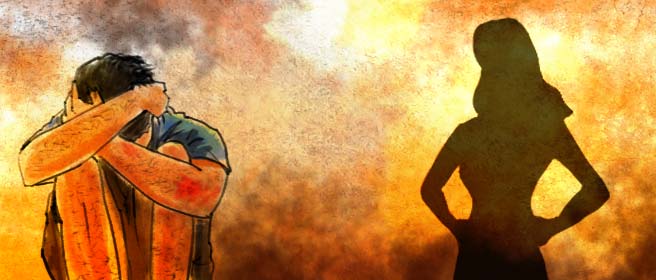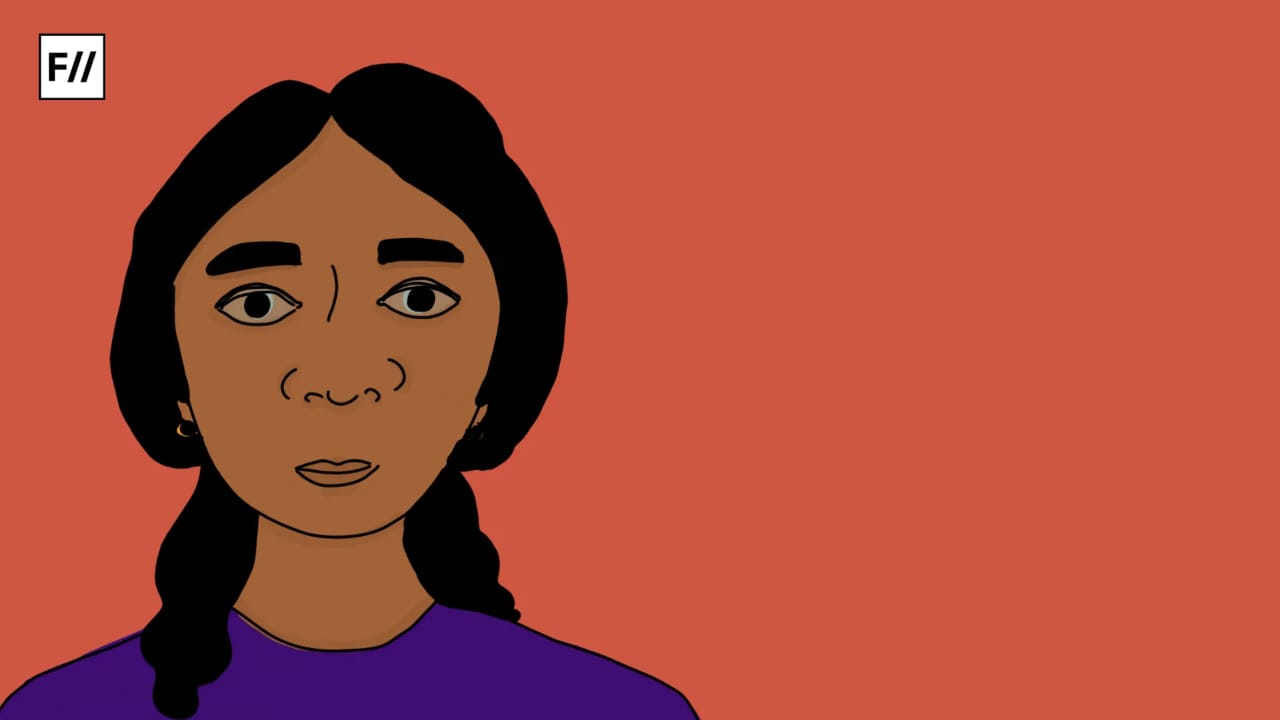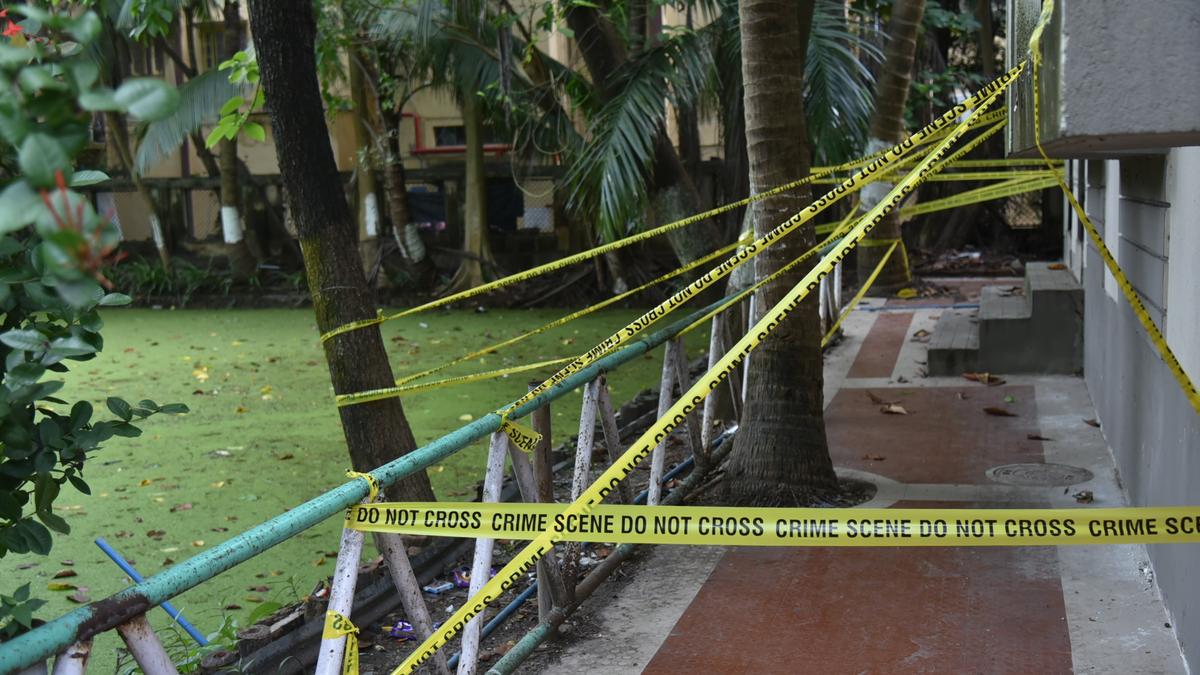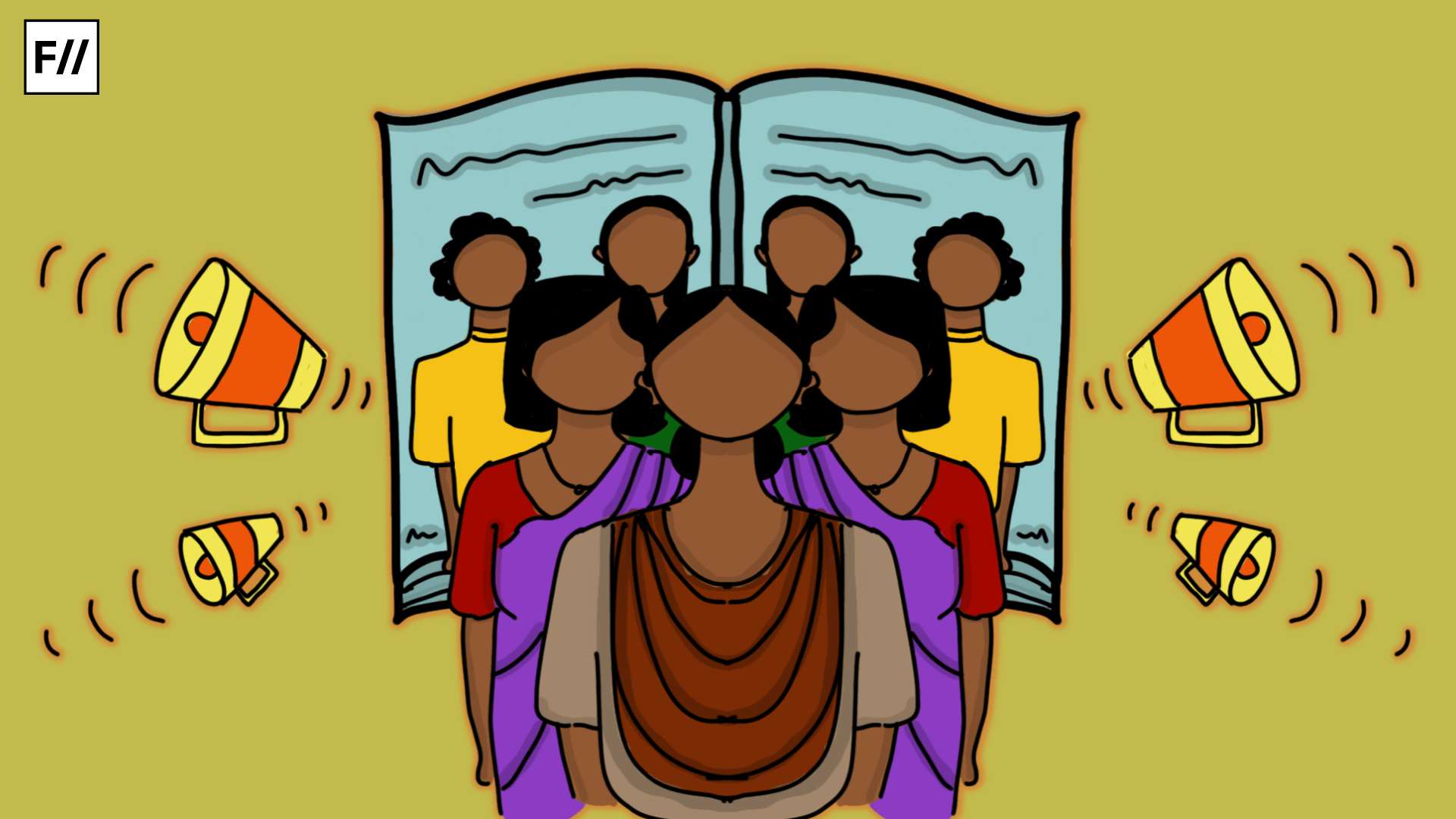With extensive reportage on monkey-man, braid-choppers, black magic, stairs to heaven, and literally anything in the world that distracts people from important issues, the Indian media has discovered new lows with every passing year. The journalistic practice has now stooped down to a level that even coverage of important incidents is saddled with unethical codes and lazy writing, thereby perpetuating existing stereotypes and misconceptions.
Reportage on sexual violence is treated with similar negligence and outright apathy. From content flow to language and grammar, the writers seem to attune themselves with the majoritarian beliefs and thus indulge in subtle victim blaming. The visuals of scared women that go along with rape stories also contribute immensely to it, albeit indirectly.
‘Pictures In Our Heads’
A visually appealing image tends to influence our understanding of things more than a written word, perhaps because images catch our attention faster than texts. There have been various studies which substantiate the influencing power of photographs and how media exploits it to set out its agenda.
Zilmann et all, in their paper titled Effects of Photographs in News-Magazine reports on Issue Perception, discuss an experiment where they exposed a group of people to news-magazine reports that featured a favourable portrayal of either side of the issue discussed in the news article. It was found that the participant’s assessment of the presented issues was biased in favour of what was suggested in the photographs.
Pictures like these suggest that the rape survivor is someone who should be ashamed and guilt-ridden for being harassed by a man
Another research that focused on cognitive impact of media image under the title Imagery effects on the selected reading of news-magazines discovered that adding threatening images to news articles compel people to read more of such stories.The study also revealed that the reading time increases when visually appealing (threatening) pictures are inserted between the paragraphs.
These studies clearly suggest that photographs are not just embellishments but an important tool of influencing the psyche of readers or viewers.Therefore, the image content is extremely important and needs to be chosen wisely. However, when it comes to reportage on sexual violence in Indian media the writers resort to stereotypical tropes which, as studies suggest, leads to the rise of rape myths or assumption that the rape survivor is always at fault.
Also read: The Underlying Sexism In The Media Reportage Of The Malayalam Actor’s Rape Case
Walter Lippmann in his book Public Opinion coins the phrase ‘pictures in our heads’ to explain the assumptions that we make about our surroundings on the basis whatever the media serves without giving it a second thought to it. These assumptions are then used to assess any other incident that follows thereafter.
Images Of Sexual Violence
The most common image used for rape stories is of a woman hiding her face with men’s shadow looming over her in the foreground. Closed mouths and cowering posture is another recurrent set of images across different mediums (print, television, and online). Most of the media sites source these pictures from stock photo agencies like iStock, Shutterstock, Getty Images, and many more which are replete with such male-biased graphics. Some sites also hire graphic designers to design their pictures but they too seem to just recreate the existing format.
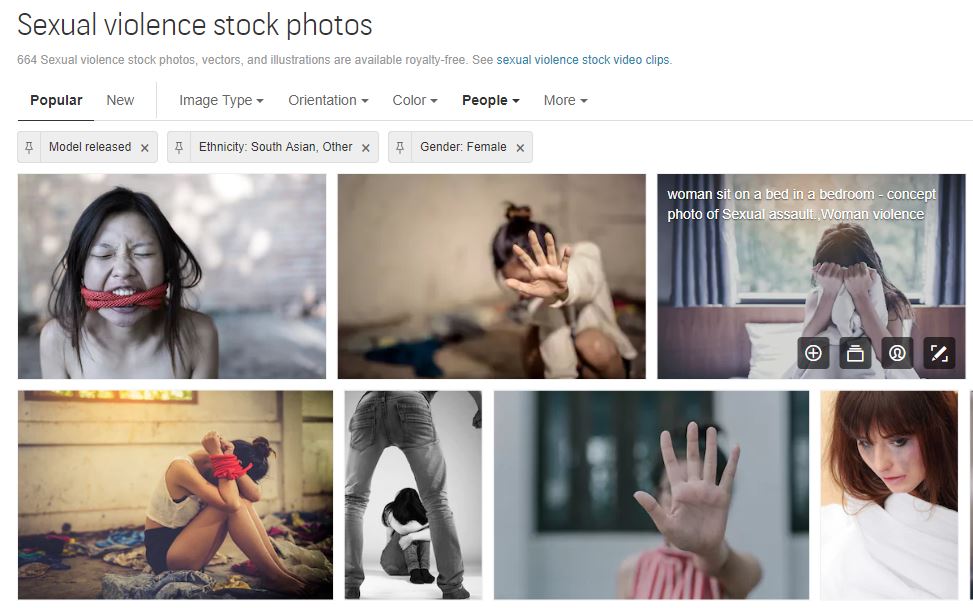
Source: Shutterstock
Pictures like these suggest that the rape survivor is someone who should be ashamed and guilt-ridden for being harassed by a man who, on the other hand, is shown as a dominant figure. In short, the onus is indirectly placed on women for being sexually assaulted. From reputed media organisations to online media sites, all of them seem to broadcast this very idea, however in different ways.
Photo-Frames: Lights, Angle & Sexism
A picture frame has several features which reveal a lot about the creator’s state of mind or general understanding of things. Nothing in a frame is devoid of an underlining meaning. Sandra Shwark in her paper Visual Representation of Sexual Violence in News Outlets identifies different photographic aspects to explain how rape myths are propagated through media images.
She tries to divide the frame into multiple sub-themes in order to explain the process of victimisation. Although the study is based on German internet news, the themes can be used to understand the Indian media scenario as well. Out of the many themes that she identifies, the ones that aptly reflect the image patterns of Indian media are lighting, camera perspective, and passivity.
She is always seen sitting in a dark room, almost isolated from the world. This gives the viewer an impression that a rape survivor has to be left alone .
Light is generally used to set the mood or to highlight certain portion of the picture. In images of sexual violence, the focus is always placed on the women with shadow of men’s hands indirectly hinting that a woman needs to be put on the spotlight and therefore should carry the burden of blame. For instance, in a Hindustan Times article on school management’s failure to report sexual assault, published in February 2017, we see dark hands of men looming over a girl while she is in the spotlight, although not in the centre of the frame. The light is deftly cast on the girl and it hides the identity of the perpetrator.
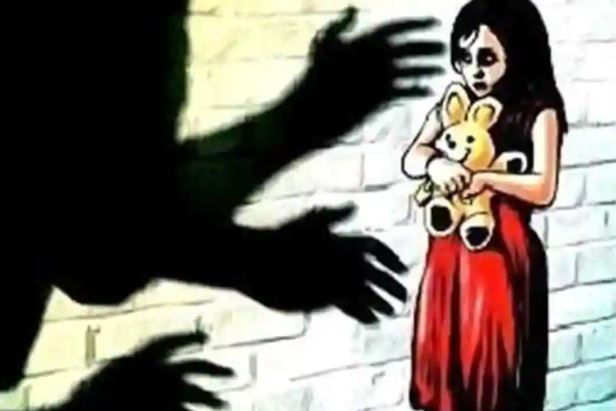
Source: Hindustan Times
The lighting is also often used to depict darkness or night-time, normalising the fact that sexual violence takes place only in night but there have been various cases of street harassment in broad daylight. For example, the following snippet taken from an NDTV report (on their website) on India being the most dangerous place for women is a picture suggesting night time, thereby reinforcing the assumption.

Source: NDTV
The recurrence of dark alleys in rape images also suggests that sexual assault always happens at the outdoors by strangers. But studies have shown that most of the rapists are known to the survivor.
Other than lighting, camera perspective or the angle at which everything is shot also reveals the hidden message that the picture attempts to convey. To put it simply, a camera’s perspective shows how the camera or the onlooker perceives the image. More often the pictures of rape is shown from a perspective of the assaulter. Therefore the power of ‘gaze’ goes to the perpetrator who sexually assaults a woman. The following picture was part of an article published by Indian Express in May 2016 which is about the number of sexual assaults reported since April in the same year.
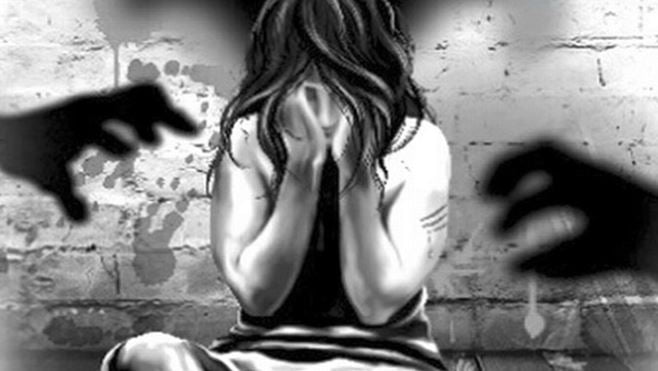
Source: Indian Express
The above picture has the woman in the background with perpetrator’s back turned towards the viewer. In other words, it gives an impression that the woman is not only being looked at by the perpetrator but also by the viewer, suggesting voyeurism of multiple kinds.
One thing that connects all the pictures is the posture and position of woman in the frame. The rape survivor’s face is always hung with shame, suggesting passivity. For example, following is a snippet from a Zee News report discussing death penalty for rapists (aired on December 18th, 2012).
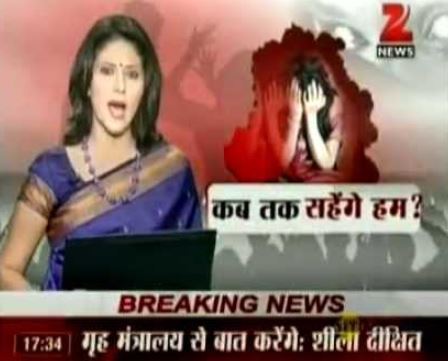
Source: Zee News
The image in the background has a woman sitting in shame and with a visual of a woman resisting a man forcing himself on her. In the top right corner, we also see a woman hiding behind a veil. All of these collectively point out to the idea of passivity as explained above.
Another noticeable feature is the fact that the woman is always seen alone with no one by her side. She is always seen sitting in a dark room, almost isolated from the world. This gives the viewer an impression that a rape survivor has to be left alone and she doesn’t require any kind of counselling or moral support from people around her. The background image in above report also has a woman sitting by herself. Perhaps this gets cemented in our head and becomes one of the reasons why we don’t come out in support of rape survivors and leave them all alone.
Different features of a photograph – lighting, camera perspective, and passivity seems to suggest various things which go unnoticed both by the viewers as well the journalists who pick out such images. This then creates a general understanding of sexual violence which is mostly based on false assumptions.
Possible Alternatives
While we cannot completely do away with photos and just publish image-less articles, we can surely come up with appropriate and more sensitive visual representations. So what are the possible alternatives?
A feminist activist, Kavita Krishnan while arguing against the journalistic ethics when it comes to rape reportage, suggested that pictures of protest against rape culture can be used as an alternative as it shows woman in a mode of resistance.
Furthermore, in order to discuss possible alternatives; photographers, graphic designers, artists and journalists and social workers assembled in Delhi for a daylong workshop called #RedrawMisogyny, organised by Breakthrough.tv and Instagram, with support from the International Centre for Journalists. The workshop aimed at creating visual based alternatives that could change the narrative around rape from shaming the survivor to focusing on the perpetrator.

Created by Breakthrough India (Source: Scroll)
Also read: Can The Media Stop Centering Queer Women’s Stories Only Around Tragedy?
The workshop concluded by suggesting that the point of view should be turned towards the rapist instead of the survivor, usage of dark sinister colours like black and red should be avoided, and the rape survivor should be shown surrounded with supporters (like doctors, physicians, lawmakers, family, and counsellors). The assembled group of people also decided to create image banks and make it lawfully accessible to news-editors across different domains.
A rape survivor has to go through a lot both physically as well as mentally but small initiatives like these can alter the existing narratives around sexual assault and rape related myths. Here are some alternatives of visual representation used/suggested by different media sites:
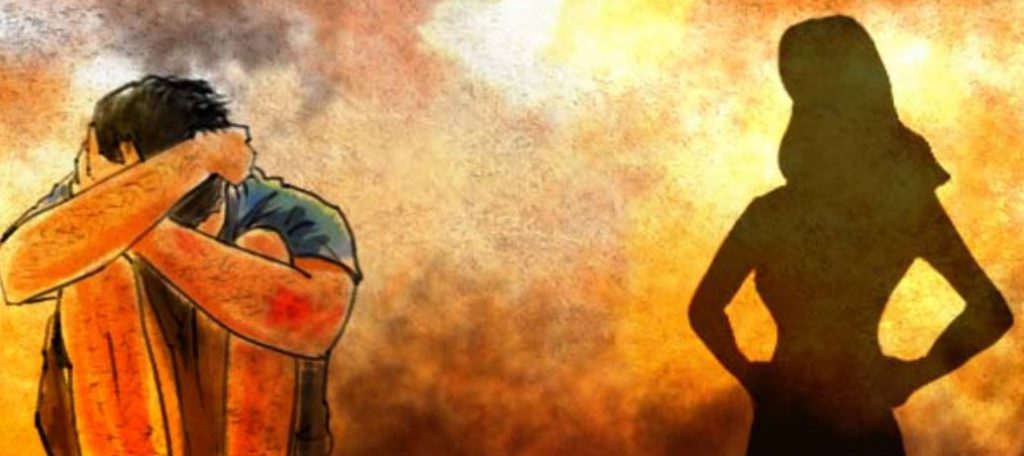
Source: Newslaundry

Image Credit: Japleen Pasricha for Feminism In India
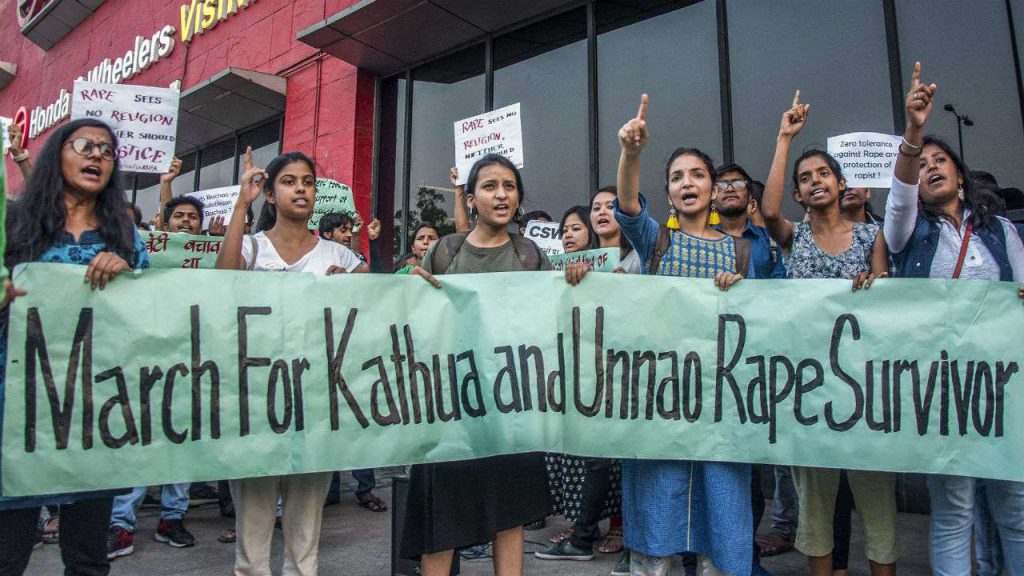
Source: The Wire
Featured Source Image: Newslaundry
About the author(s)
Tanya is a post-graduate in Media Studies from Centre for Culture, Media and Governance at Jamia Milia Islamia. She is passionate about music, cinema and lots of street food.
